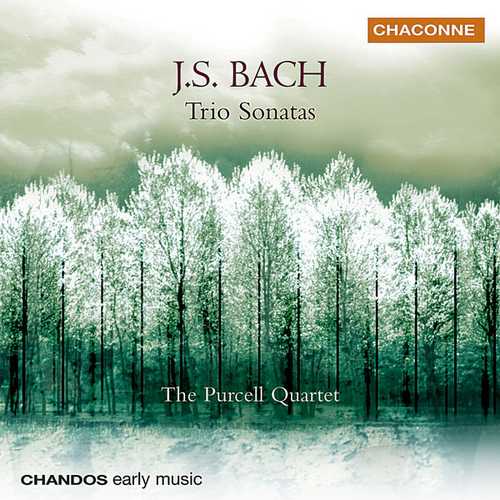
Composer: Johann Sebastian Bach
Performer: Purcell Quartet
Format: FLAC (tracks)
Label: Chandos
Catalogue: CHAN0654
Release: 2000
Size: 374 MB
Recovery: +3%
Scan: yes
Trio Sonata No. 1 in E flat major, BWV525
01. I. [Allegro]
02. II. Adagio
03. III. Allegro
Trio Sonata No. 2 in C minor, BWV526
04. I. Vivace
05. II. Largo
06. III. Allegro
Trio Sonata No. 3 in D minor, BWV527
07. I. Andante
08. II. Adagio e dolce
09. III. Vivace
Trio Sonata No. 4 in E minor, BWV528
10. I. Adagio – Vivace
11. II. Andante
12. III. Un poc’ Allegro
Trio Sonata No. 5 in C major, BWV529
13. I. Allegro
14. II. Largo
15. III. Allegro
Trio Sonata No. 6 in G major, BWV530
16. I. Vivace
17. II. Lento
18. III. Allegro
‘Too good to be left only to organists’ is how Richard Boothby cheekily describes Bach’s six delightful ‘organ trios’, in which the organist’s two hands play one of the upper lines each, while the bass is played on the pedals. Such is the integrity of this texture in Bach’s writing that transferral of this music to a ‘true’ trio sonata line-up of two melody instruments and continuo is a relatively simple and satisfactory task, and there seems to have been no shortage in recent years of musicians who would agree with Boothby to the point of making their own arrangements for various small ensembles. On disc, these have often served as filler items. Recordings of all six are rarer.
Boothby’s arrangements for the Purcell Quartet differ from the others currently available in involving no wind instruments. He shows considerable imagination, however, in convincingly varying the scoring between just two violins, viola da gamba and harpsichord, transferring the melodic line to his own viola da gamba whenever the tessitura demands in some movements, making it a full-blown partner in the dialogue in others, and also awarding the harpsichord a melodic role in BWV530.
Typically for the Purcell Quartet, the performances offer a sweet sound and a clarity of texture which is all to the good in such intricately and ingeniously contrapuntal music. Generally speaking, however, these performances are enjoyable for their lightness and tenderness (try the slow movement of BWV529). If you want something livelier, and do not necessarily require all six sonatas, you may just favour the Palladian Ensemble’s characteristically alert recording of four of them on Linn.